senkosam
Well-known member
- Joined
- Aug 5, 2019
- Messages
- 154
- Reaction score
- 63
- LOCATION
- Hudson Valley, N.Y.
Very impressive ! Like the name frankenbait. Kind of a moniker for my inspired creations.
I also have 4 of the molds that produced your pearl lures.
I used to think that ordering soft plastic making supplies was not economical so why bother, but then it occurred to me after a while the advantages and the economy:
1. infinite choice of colors and color combinations
2. more components for frankenbaits (as in the example using a Mann worm tail and a molded grub body)
3. s/h for a few bags of lures is very expensive depending how often I get the urge to buy some. Now I can make a few or many, try new designs and repour those that caught fish.
4. I can copy some lures in plaster, though I recently discovered a super fine mold making substance
5. Never having to worry about a source running out, *a lure being discontinued, color not in stock, delays in shipping, etc. makes it worthwhile
examples:
*Uncle Josh pork frog in #1 and #11 sizes:
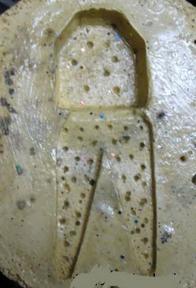
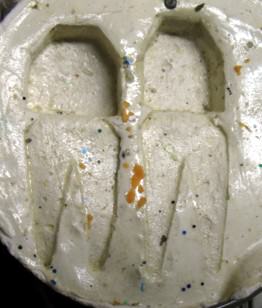
this trailer:
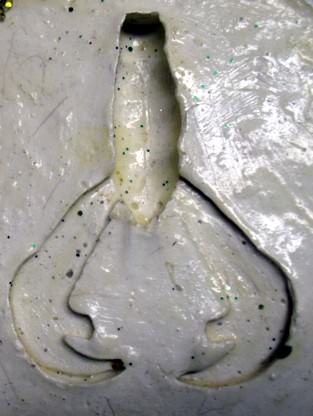
(at at least my claws don't rip like the original when I mix salt water plastic with regular firm)
another trailer:

6. most important is discovering lure designs never seen before that catch fish better than most lures made I've used.
examples of originals:



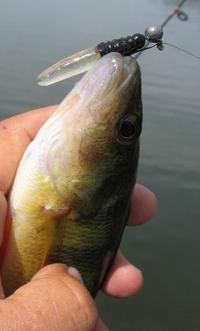 (one of the best!)
(one of the best!)
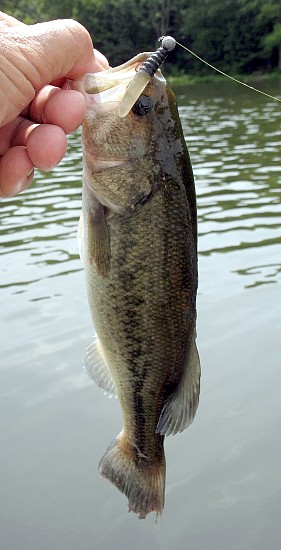
Mr Twister curl tail cut off the grub and reattached:

a claw from a craw bait added to a grub body:

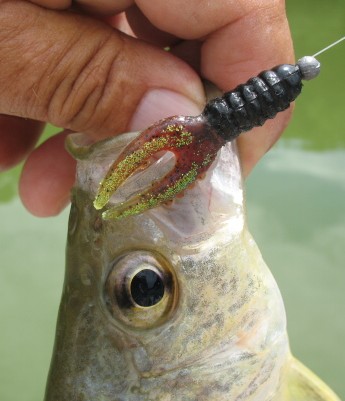

they WORK!
joining grub bodies after the curl tails removed and then wacky or regular rigging them:


Clear plastic:
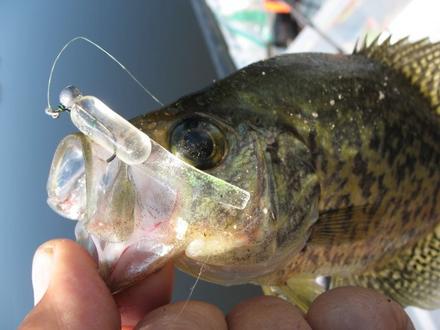


(note the sparkle on the clear stick. I use a soft plastic glue on a surface of the soft plastic lure and roll it in glitter.)
Equally important than the above reasons is finding unique lure actions that catch fish of ALL species. At first you think, no way, until it works and then you see why when watching the lure's unique subtle action profile in the water.


opinion: believing a lure matches a forage is simply adding a name via an imagined correlation to an animal - an unnecessary step IMO. I'd rather keep is simple by design,
IE. cone tail, claw tail, tapered tips mini stick, spike tail and my
spoon minnow (original was discovered stirring hot plastic with a spoon, leaving a thin film for a tail and dipping the body in the plastic 4x after using a razor to shape it; shiny floor tile now used); the super thin tail quivers when the lure is stationary.

I also have 4 of the molds that produced your pearl lures.
I used to think that ordering soft plastic making supplies was not economical so why bother, but then it occurred to me after a while the advantages and the economy:
1. infinite choice of colors and color combinations
2. more components for frankenbaits (as in the example using a Mann worm tail and a molded grub body)
3. s/h for a few bags of lures is very expensive depending how often I get the urge to buy some. Now I can make a few or many, try new designs and repour those that caught fish.
4. I can copy some lures in plaster, though I recently discovered a super fine mold making substance
5. Never having to worry about a source running out, *a lure being discontinued, color not in stock, delays in shipping, etc. makes it worthwhile
examples:
*Uncle Josh pork frog in #1 and #11 sizes:


this trailer:

(at at least my claws don't rip like the original when I mix salt water plastic with regular firm)
another trailer:

6. most important is discovering lure designs never seen before that catch fish better than most lures made I've used.
examples of originals:





Mr Twister curl tail cut off the grub and reattached:

a claw from a craw bait added to a grub body:



they WORK!
joining grub bodies after the curl tails removed and then wacky or regular rigging them:


Clear plastic:



(note the sparkle on the clear stick. I use a soft plastic glue on a surface of the soft plastic lure and roll it in glitter.)
Equally important than the above reasons is finding unique lure actions that catch fish of ALL species. At first you think, no way, until it works and then you see why when watching the lure's unique subtle action profile in the water.


opinion: believing a lure matches a forage is simply adding a name via an imagined correlation to an animal - an unnecessary step IMO. I'd rather keep is simple by design,
IE. cone tail, claw tail, tapered tips mini stick, spike tail and my
spoon minnow (original was discovered stirring hot plastic with a spoon, leaving a thin film for a tail and dipping the body in the plastic 4x after using a razor to shape it; shiny floor tile now used); the super thin tail quivers when the lure is stationary.



